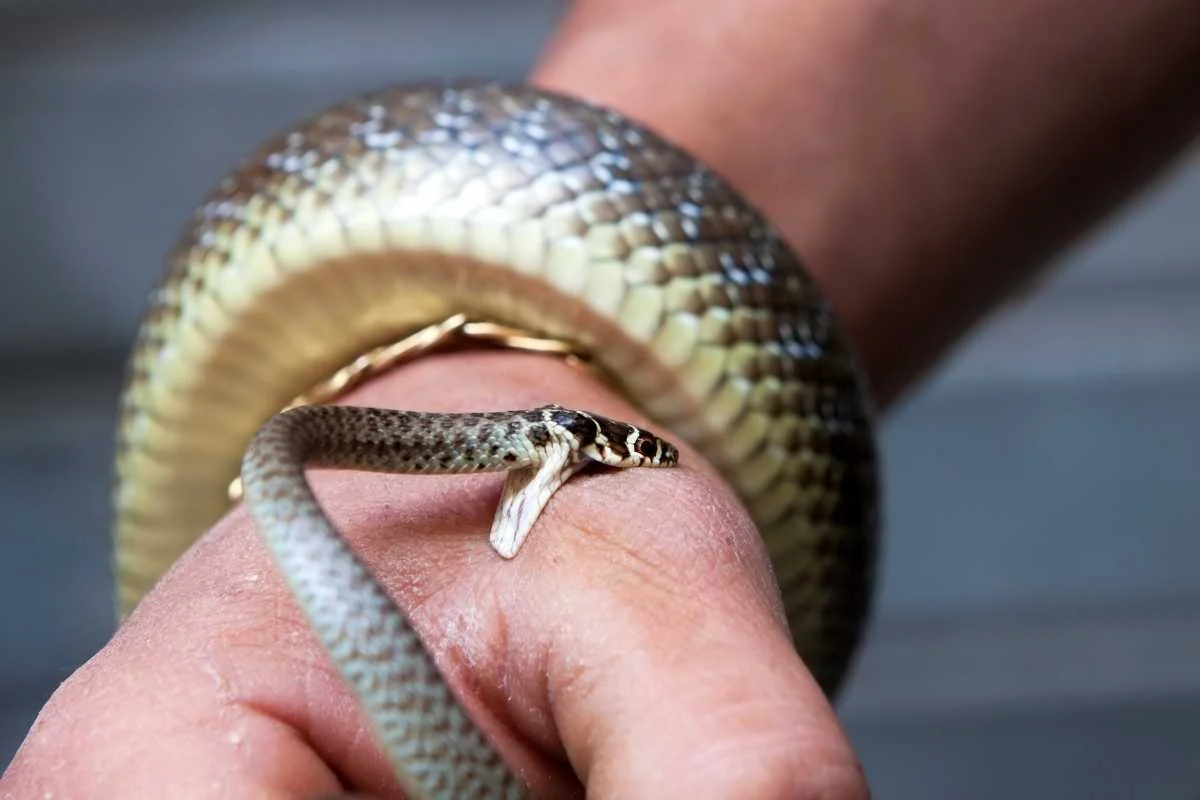What if I'm Bitten by a Snake
The majority of snakes pose little threat to people. Only about 20% of the snakes in the United States are venomous. These include the copperhead, coral snake, water moccasin, and rattlesnake varieties in North America. Their bites may cause serious harm and sometimes even death.
Call 911 or your local emergency number right away if a venomous snake bites you, even if there are no symptoms. Some bites from venomous snakes, especially coral snakes, may not cause immediate pain or physical symptoms. Remember to stay calm, think clearly and reach out for help. Many emergency departments contain antivenin which may counteract the venom.
Snakebite Symptoms
Venomous snake bites may cause everything from minor puncture wounds to serious sickness and even death. A venomous snakebite's first symptoms might be deceiving. A victim may initially show no indications of the attack before suddenly having trouble breathing and going into shock.
Following a bite from a venomous snake, there can be a significant searing sensation at the wound within 15 to 30 minutes. This may escalate to swelling and bruising at the injury and extend all the way up the arm or leg. Other warning signs and symptoms include a peculiar taste in the tongue, nausea, hard breathing, and an overall feeling of weakness.
When you receive an antivenin injection, you'll be able to recognize if a venomous snake has bitten you. Itchy, scorching, or just plain strange sensations under the skin are immediately noticeable when injected with antivenin.
If you were envenomated, the best first aid is to go to the hospital. A polyvalent serum is used as treatment, and it works for almost all of the continent's venomous snakes. For all rattlesnakes, copperheads, cottonmouths, and their relatives throughout North and Central America, there is a single serum.
Get Treatment Immediately
Since most of the deaths from snake bites this century have occurred within certain religious groups in the Eastern US who dance with rattlesnakes, get bitten, and then reject treatment. Therefore, less than one in 3,000 bites in the US result in a fatality. The longer the snake bite goes without treatment, the more painful and unpleasant it becomes, and there is a higher risk of fatality.
With a little common judgment, it is seldom fatal. It's better when you notice a snake, take a step back, glance around, and then you and the snake may each continue on your own. Snakes will not pursue humans.
If you suspect that you may have been bitten, you should seek medical assistance right away and apply a compression bandage to the affected region as directed. Keep calm and apply the bandage without worrying about whether it was an insect, a non-venomous snake, an ant, or something else.
In the US, 70% of snake bites have just one puncture or scratch, and their fangs are like little hypodermic needles. Some hurt less than an ant bite even though they may stop your heart if left untreated.
Put a bandage on, contact an ambulance or a friend, and get immediately to the hospital so they can take care of you. Even if the snake was venomous, it could have just been a dry bite; nonetheless, but if you don't treat it as such, you could risk death.
Download the SnakeSnap App on Google Play or the Apple iTunes Store and get a free trial.
